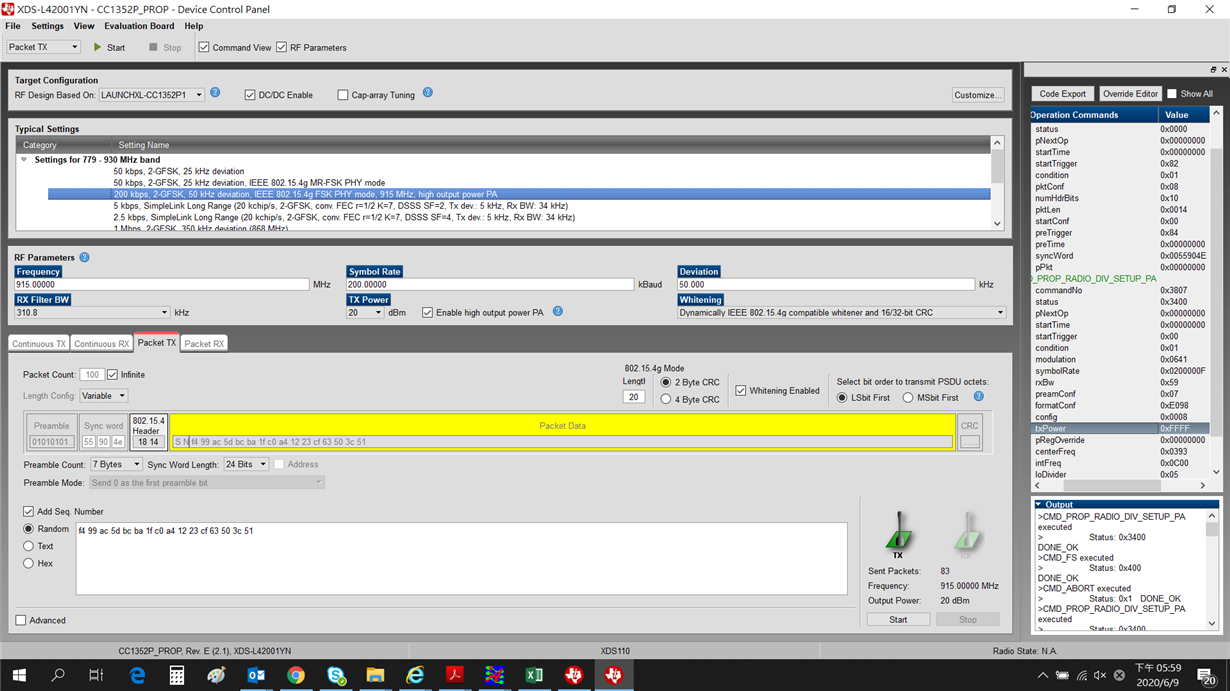Hi TI,
As to CC1352P1, we would like to know below things during the design,
1. Is there transmit power table accessible by FW to do the modification? (e,g High power port to set TX power 17dBm)
2. There is a proximity sensor to detect the antenna to the body so the SAR testing will mandate the TX power to a upper limit that might be lower than 20 dBm, in that case we are wondering whether >98% duty cycle Packet TX is allowed for this modification purpose (via test firmware or which register)?
Thanks~
Wilson




